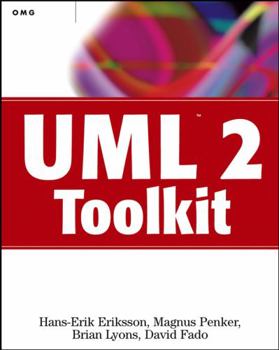UML 2 Toolkit
Select Format
Select Condition 
Book Overview
Gain the skills to effectively plan software applications and systems using the latest version of UML
UML 2 represents a significant update to the UML specification, from providing more robust mechanisms for modeling workflow and actions to making the modeling language more executable. Now in its second edition, this bestselling book provides you with all the tools you'll need for effective modeling with UML 2. The authors get you up to speed by presenting an overview of UML and its main features. You'll then learn how to apply UML to produce effective diagrams as you progress through more advanced topics such as use-case diagrams, classes and their relationships, dynamic diagrams, system architecture, and extending UML. The authors take you through the process of modeling with UML so that you can successfully deliver a software product or information management system.
With the help of numerous examples and an extensive case study, this book teaches you how to:
* Organize, describe, assess, test, and realize use cases
* Gain substantial information about a system by using classes
* Utilize activity diagrams, state machines, and interaction diagrams to handle common issues
* Extend UML features for specific environment or domains
* Use UML as part of a Model Driven Architecture initiative
* Apply an effective process for using UML
The CD-ROM contains all of the UML models and Java?TM code for a complete application, Java?TM 2 Platform, Standard Edition, Version 1.4.1, and links to the Web sites for vendors of UML 2 tools.
UML 2 represents a significant update to the UML specification, from providing more robust mechanisms for modeling workflow and actions to making the modeling language more executable. Now in its second edition, this bestselling book provides you with all the tools you'll need for effective modeling with UML 2. The authors get you up to speed by presenting an overview of UML and its main features. You'll then learn how to apply UML to produce effective diagrams as you progress through more advanced topics such as use-case diagrams, classes and their relationships, dynamic diagrams, system architecture, and extending UML. The authors take you through the process of modeling with UML so that you can successfully deliver a software product or information management system.
With the help of numerous examples and an extensive case study, this book teaches you how to:
* Organize, describe, assess, test, and realize use cases
* Gain substantial information about a system by using classes
* Utilize activity diagrams, state machines, and interaction diagrams to handle common issues
* Extend UML features for specific environment or domains
* Use UML as part of a Model Driven Architecture initiative
* Apply an effective process for using UML
The CD-ROM contains all of the UML models and Java?TM code for a complete application, Java?TM 2 Platform, Standard Edition, Version 1.4.1, and links to the Web sites for vendors of UML 2 tools.
Format:Paperback
Language:English
ISBN:0471463612
ISBN13:9780471463610
Release Date:October 2003
Publisher:Wiley
Length:511 Pages
Weight:2.20 lbs.
Dimensions:1.2" x 7.4" x 9.3"













